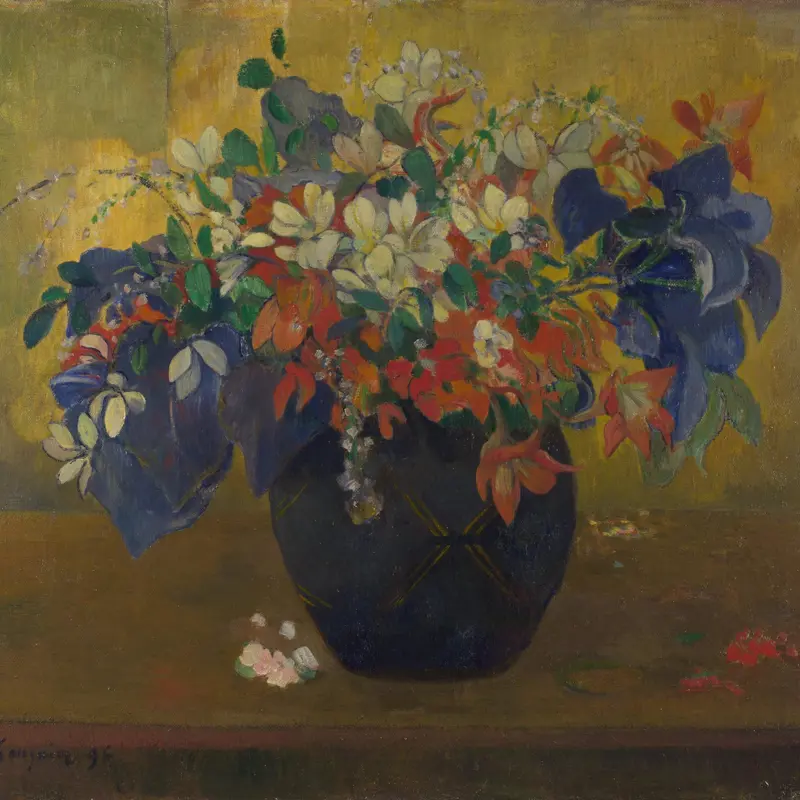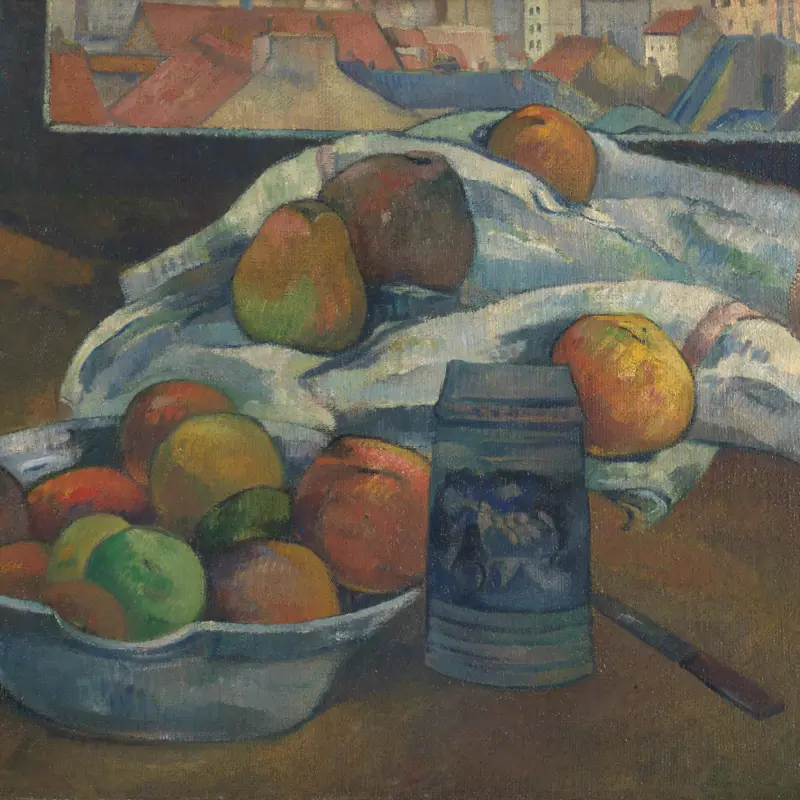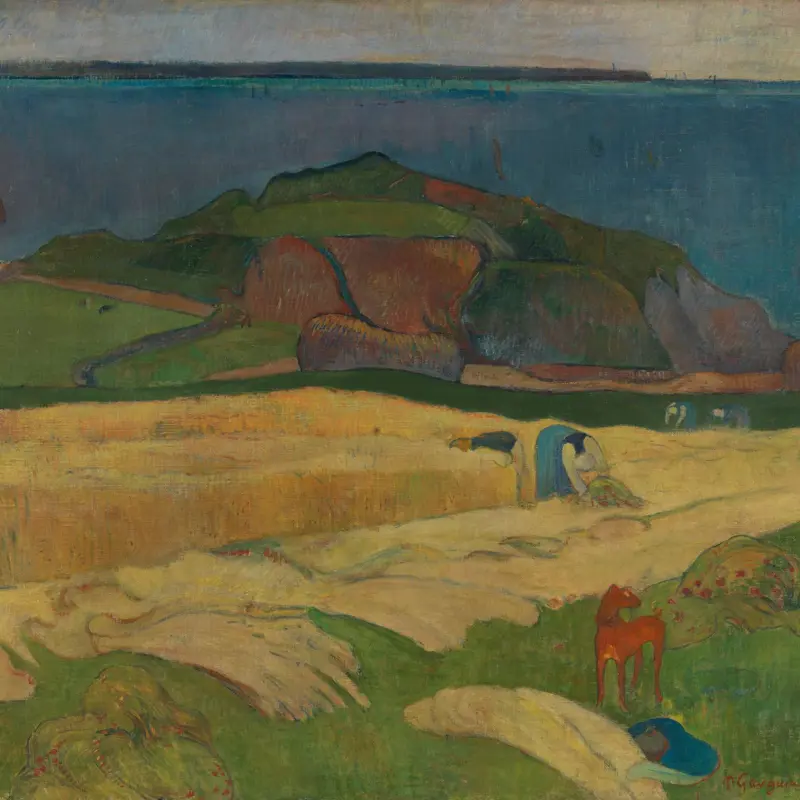Paul Gauguin, 'Faa Iheihe', 1898
About the work
Overview
In 1891 Gauguin travelled to the South Pacific islands, where he stayed for nearly the rest of his life, mostly on the island of Tahiti. The title of this painting is almost certainly a misunderstanding on the artist's part of the Tahitian word 'fa`ai`ei`e' which means "to beautify, adorn, embellish", in the sense of making oneself beautiful for a special occasion.
In common with many of his other paintings of the period, for example 'Where Do We Come From? What are We? Where are We Going?' of 1897 (Boston, Museum of Fine Arts), Gauguin has used a horizontal format inspired by Javanese sculptured friezes. Some of the individual figures, such as the central woman, are also taken from such friezes. The three women on the left and the horseman reappear in 'Rupe Rupe (Luxury)' of 1899 (Moscow, Pushkin State Museum of Fine Arts).
Key facts
Details
- Full title
- Faa Iheihe
- Artist
- Paul Gauguin
- Artist dates
- 1848 - 1903
- Date made
- 1898
- Medium and support
- Oil on canvas
- Dimensions
- 54 × 169.5 cm
- Inscription summary
- Signed; Dated
- Acquisition credit
- On loan from Tate: Presented by Lord Duveen 1919
- Inventory number
- L708
- Location
- Room 43
- Image copyright
- On loan from Tate: Presented by Lord Duveen 1919, © 2000 Tate
- Collection
- Main Collection
About this record
If you know more about this work or have spotted an error, please contact us. Please note that exhibition histories are listed from 2009 onwards. Bibliographies may not be complete; more comprehensive information is available in the National Gallery Library.



